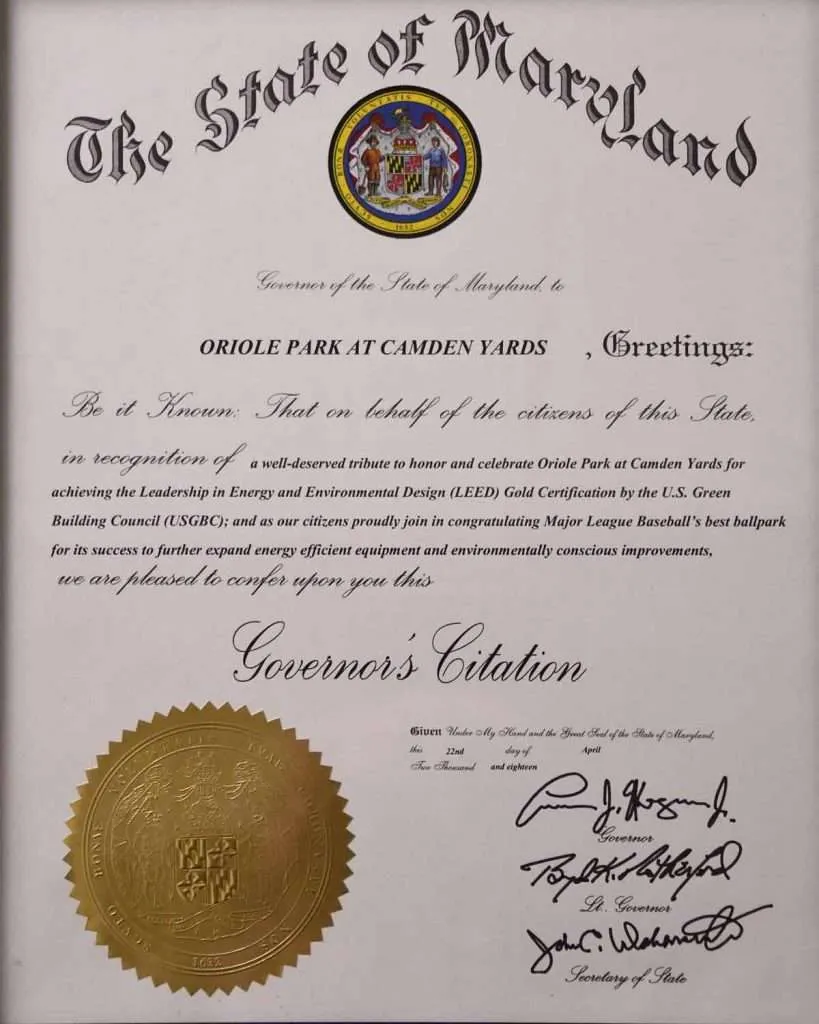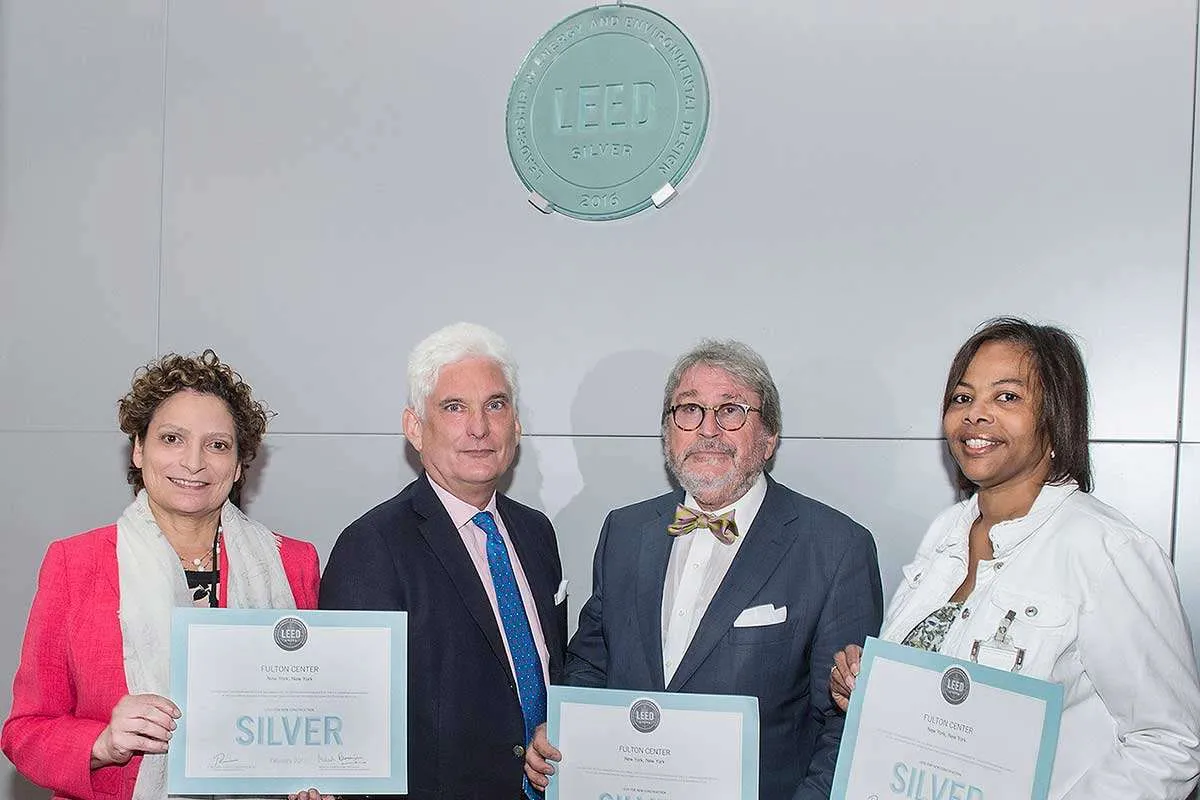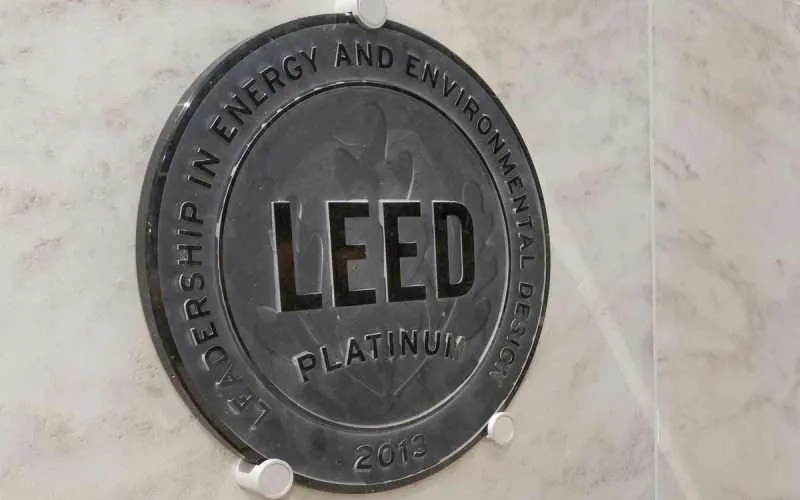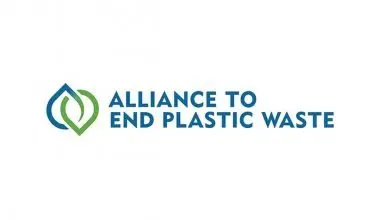Table of Contents Show
[Updated: 25 May 2022]
Industries around the world are learning about their environmental impact and investing more and more into being more sustainable.
Research has made them realize how necessary it is to adopt a much “greener” approach in how they go on to do things.
This approach of “going green” is now also being catered by the construction industry, pushing them to achieve LEED certifications to show the world how they’re more than willing to reduce their environmental impact.
It’s you that made this happen!
All our voices about how unsustainable practices are hurting Earth has finally been heard.
So, What is LEED certification?
LEED (Leadership in Energy and Environmental Design Certification) is the gold standard for rating green building systems, having been developed by the United States Green Building Council (USGBC).
LEED was developed to encourage local and private construction companies, along with architects and engineers, to be more cautious in their projects and be more sustainable.
It’s a way to ensure safety of the environment from negative impacts of the construction industry.
The organization has a goal to make sure that a certain set of standards are met when a building is constructed, so that it may be classified as “Green”.
LEED certification implies that the building has met specific standards of being environmentally friendly.
What are the benefits of obtaining a LEED certification?
1. Better Indoor Air Quality
LEED-certified buildings have shown to have a better quality of indoor conditions than non-LEED certified buildings.
This is because the innovative green HVAC systems in these buildings are equipped with antimicrobial, anti-allergy filters which considerably improve indoor air quality.
2. Improves Health (Physical and Mental, both)
This can improve the overall health of the people living and working in the building.
Even spaces that are now retrofitted to meet the LEED criteria have also shown an improvement in quality of air and reduced illnesses due to air pollution.
One study seemed to further highlight the fact that in LEED-certified buildings, the mental performance of workers increased by 25%.
3. Better Workforce
Organizations would be nowhere if it wasn’t for their employees!
So taking care of an organization’s workforce is a no-brainer. If you’re in the HR department, be sure to take this idea of LEED certification to the higher-ups.
For an office building, LEED meant fewer sick leaves and great improvements in productivity of employees.
Worker satisfaction is known to be much higher in LEED-certified environments leading to a reduction in employees leaving the company (low employee turonover).
The new generation (especially Generation Z) is much more aware of the importance of living a greener life and wants to work in a green environment.
Thus, LEED certified office buildings could help companies attract highly talented employees.
4. Improves Public Relations

“Oriole Park and Warehouse LEED Certification” by MDGovpics is licensed under CC BY 2.0.
Society appreciates companies that are constructing buildings based on LEED certification.
This helps to improve public relations of these companies, improving their relationship with the consumers.
It also helps to deliver a positive impact on a company’s stance on producing a more sustainable environment.
You may not have noticed until today, but LEED has a greater effect on your company’s public image than you might think.
This also tends to make you stand out from your competitors, as consumers will now see how innovative and forward-minded and futuristic your company is becoming.
5. Achieve your ‘green goals’ quicker than ever
If a company is striving to achieve green operations, LEED offices will space further your objectives as these spaces are highly energy-efficient and can greatly complement your marvelous plan to be more sustainable.
LEED-certified buildings are designed in such a way that they help to reduce water and electricity consumption.
This can be done by installing faucets and low-flow toilets that use HDPE partitions and many other modifications.
6. Save money
Reduction in utility costs due to conservation will save you quite a bit of money.
Some companies have gone to say that it can offset the rent associated with leasing office spaces.
7. Tax Incentives and Rebates

“Fulton Center LEED Certification” by MTAPhotos is licensed under CC BY 2.0.
LEED buildings have a high likelihood of qualifying for various incentives related to tax rebates and zoning permits.
These buildings are mostly located in special economic zones of growth, meaning that you can qualify for paying little to nothing in terms of local or state taxes.
LEED buildings have recycling and composting programs that can help to lower the waste by putting it in good use.
This reduces costs associated with waste removal. You can even get rebates from recycled materials that are sold.
To summarize, these buildings are generally much more beneficial for our planet and the quicker we implement LEED certification standards, the quicker we’ll be able to reduce our carbon footprints.
How LEED certification helps the environment.
Green businesses and buildings are more attractive to tenants. They also have a lease rate of 20% greater than average. Businesses going green tend to be more popular and outperform competitors.
LEED ranking factors makings businesses look at the environmental impact of unsustainable use.
LEED certification looks at the building process itself rather than the actual building, and the impact it may have on the environment.
LEED certification holds you accountable for making sure you are keeping your business eco-friendly.
Disadvantages of LEED certification
1. Status symbol (Cheating the system)
Many companies forget the real purpose behind LEED certifications.
LEED is sometimes considered by many companies as a status symbol rather than having the desire to go green for the sake of the earth.
They choose to go and achieve points in any way they can.
This is actually counter-intuitive to the actual purpose of why LEED certification was developed.
This mentality of ‘cheating the system’ is because of an unweighting point system from LEED.
Let me give you an example.
An unweighting system means that you can earn a point for doing the simplest of things like building a bike rack.
But none of your employees ride to work on bikes, making it look like you’re promoting alternative means of transportation.
In fact, you aren’t doing anything for the environment but rather earning a point just to be LEED certified.
Having regular audits for the use of sustainable design could prove to be fruitful.
2. Innovation Points
Moreover, 4 bonus points are provided by LEED for innovative design.
This means if you can’t create the most cutting-edge sustainable design, you’ll definitely lose those points.
For small and medium companies, shelling out big bucks for innovative LEED-certified architects is difficult.
3. Requires Time and Energy
Even though I suggested that it’s very easy to rig the system, obtaining a LEED certification can be fairly intimidating and overwhelming.
It consumes a lot of energy and involves of a lot of paperwork.
4. Costly
LEED registration fees can range from 750-3750 dollars, that is the fee to get you in the registry only!
The certification fee is separate and can cost you additional 1500-7500 dollars.
All of this amounts to around $10,000.
However, consider that to be just the participation fees.
Then come the real costs which include construction with sustainable materials and hiring sustainability-audit staff.
Also, expensive initial costs of installing renewable energy options add up to a very expensive certification to obtain.
This has sadly made many small sustainable businesses abandon LEED certification altogether.
5. Defeats true purpose
For some the entire concept of LEED certification is considered to be laughable.
This is because of one fatal flaw.
No matter the unsustainability of the area (like even if it’s in middle of the desert) and no matter the purpose (say a structure for parking), if the building fulfills the LEED criteria, it can obtain a LEED certification.
6. Many variables overlooked
LEED isn’t a performance tool. In fact, it is a design tool.
All the LEED buildings are to report their annual energy and water usage. However, there is no way to determine if they are actually trying to save energy.
For example, if a company installs recycling systems, renewable energy equipment like solar panels and high efficiency appliances like LED bulbs and employees keep on over-using as they did, then energy isn’t really being saved is it?
A simple way would be to hold regular meetings within the company to ensure proper use of resources.
Sadly, as LEED status gains, more businesses will want to seek its approval.
This will make federal and local governments to give more incentives for LEED approved buildings.
More designers and builders will blindly follow its requirements without questioning its actual purpose (to save resources).
How to become LEED certified?
To become LEED certified you should be more than aware of requirements of sustainable buildings like building smaller, using renewable energy resources such as solar energy, use recyclable materials like aluminum, adopt water conservation techniques and choosing energy star windows.
So how can your building become LEED certified?
Well the process can be divided into five steps;
- Be aware of the deadlines. The LEED rating systems change frequently so be educated on the schedule.
- Be sure to register, there is a flat fee for registration.
- Determine the credits you want to achieve and the credits you can’t achieve.
- Application review process
- The LEED institute will then decide whether they accept or reject your application
Frequently asked questions (FAQs)
Is it worth getting LEED certified?
Here’s what you get when your building is LEED certified;
- Considerable tax breaks and grants
- Get higher rent from tenants who are happy to live in LEED approved buildings
- Assistance from USGBC in expediting permits on certain projects,
- Praise from the public (Look at this image)
- Satisfaction of being more environment-friendly
- Inspiring others
This does feel like having your property LEED-certified is worth it.
What jobs can you get when you know LEED certification?
- LEED certification reviewers
- Sustainability managers/analysts
- Architects (You don’t become an architect through LEED, just a better one)
These are only few of the many jobs you can find on U.S. Green Building Council’s “Career Center” page.
Who needs LEED certification?
Companies trying to be more sustainable and plan to inspire others can greatly benefit by obtaining a LEED certification.
This can allow them to prove that they are carrying out their sustainability mission with full compliance.
Even architects and managers who want to protect their future careers are motivated to take the LEED exam.
Can a product be LEED certified?
The USGBC as of yet do not certify products. However, product and services of a sustainable company can surely help play a role in helping you obtain LEED certification for your office buildings.
What are the 4 levels of LEED certification?
There are 4 USGBC membership levels:
- Organizational
- Silver
- Gold
- Platinum, the highest certification of the four levels of membership (Featured Image).
What is the highest LEED certification?
The highest LEED certification is “Platinum” which you get after 80+ points earned. You get Gold on 60-79 points earned, Silver on 50-59 points, and just Certified at 40-49 points earned.
What does being LEED certified mean?
LEED certification provides building owners and operators a precise framework for identifying and implementing practical and measurable green building design, construction, operations and maintenance solutions.
How do I become LEED certified?
To take the LEED exams, a candidate has to be over 18 years or older. No other requirements are necessary.
Prior LEED project experience is important but not mandatory. Once you take the EXAM and clear it, only then will you become LEED certified.
Is the LEED exam difficult?
Giving the LEED exam can be highly intimidating.
Although it is a very difficult exam to go through, with the right amount of preparation you can succeed in it.
You might have to decide what LEED accreditation is right for you so you can be prepared for the right exam.
You have two options for LEED credentialing which include:
- Green associate
- Accredited professional (AP)
This book will give you adequate information to get to know more about the exam.
Here are some formats and procedures you should know for LEED Green Associate Exam:
- Registration Fees for the Exam: $250 ($100 for students, $200 for USGBC members)
- Eligibility requirements: At least 18 years old.
- Format: There will be a 100 multiple-choice questions which you can attempt in-person or online.
- Language: You can give it in different languages like Arabic, Brazilian Portuguese, Chinese, French, German, Japanese, Korean and Spanish.
- Score Needed: A passing score to become LEED Green Associate is 170 out of 200.
- Rescheduling/cancellations: You can cancel up to 3 days prior to the exam.
How much does it cost to get LEED certified?
As a general estimate it could cost $5000 ($1,200 for registration and $4000 flat fee) to as high as $20,000-25,000.
It depends on the type of construction and the gross covered area.
For residential homes, however, it is estimated to be around $300 only.






